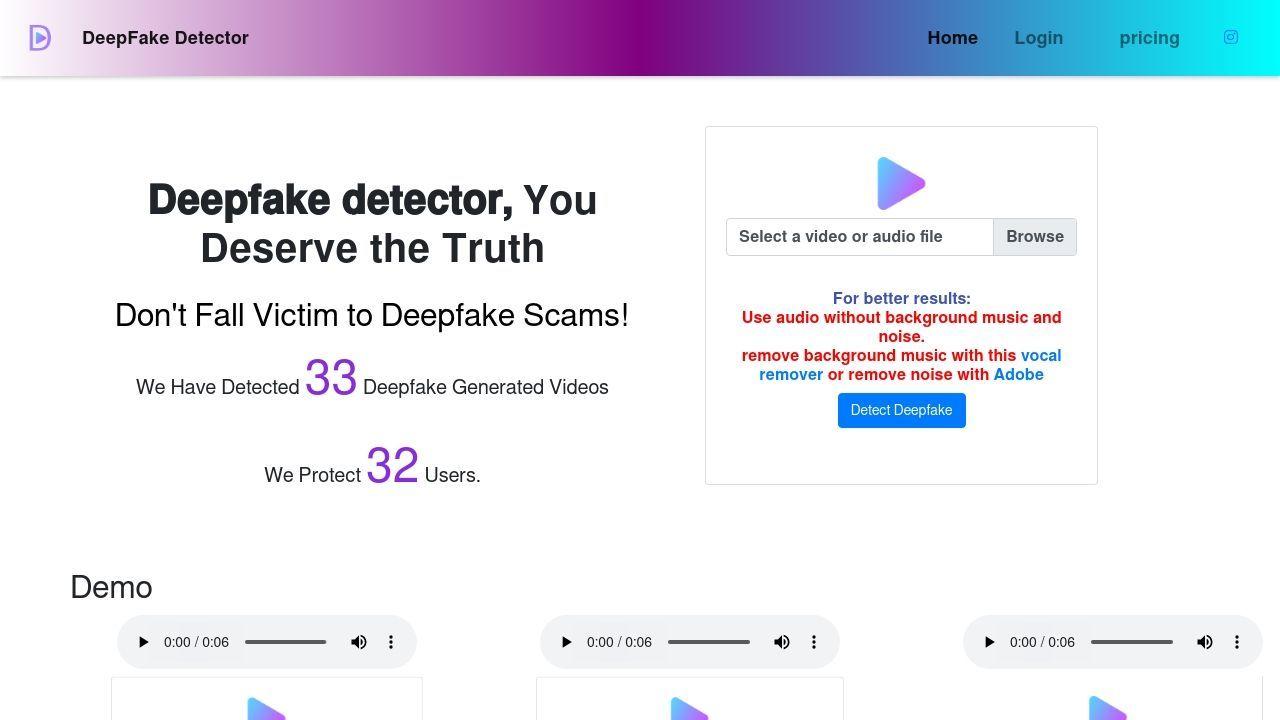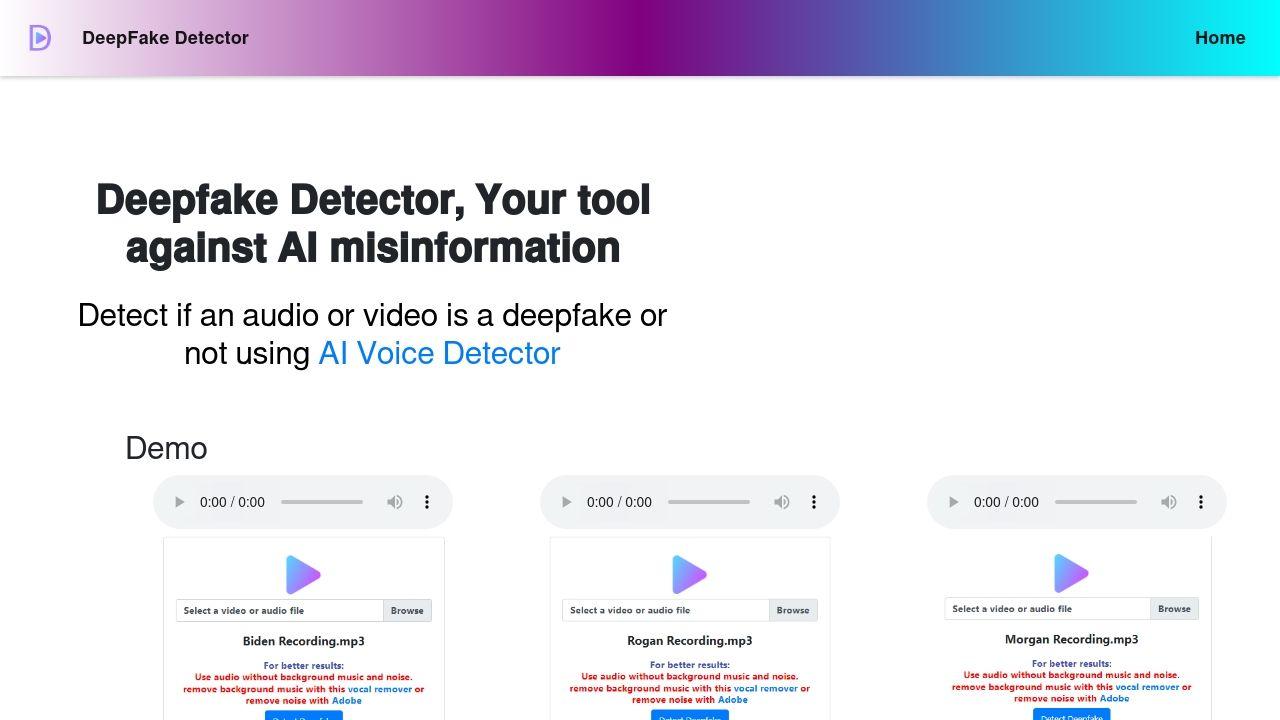McAfee introduces Deepfake Detector to differentiate authentic content from AI-manipulated material
In today's fast-evolving digital landscape, cybersecurity faces unprecedented challenges due to advancements in artificial intelligence (AI). These innovations have enabled cybercriminals to exploit vulnerabilities through sophisticated tactics such as model hacking, AI-driven malware, and deceptive social engineering schemes. This has led to a surge in fake audio and video content, fueling scams and misinformation campaigns worldwide. McAfee, a leader in cybersecurity, has taken proactive steps by incorporating generative AI into its defenses. A standout example is the McAfee Deepfake Detector, which helps users identify AI-altered content, empowering them to discern between authentic and manipulated material. As these cyber threats continue to grow in complexity and scale, McAfee remains at the forefront, using AI-driven solutions to protect consumers and mitigate the risks posed by deepfakes and other emerging digital threats.
Mashable India conducted an interview with Steve Grobman, Executive Vice President and Chief Technology Officer of McAfee regarding the McAfee Deepfake Detector. Here's what he has to say about this innovative technology.
Q1. Can you outline some of the key cybersecurity threats currently facing consumers, such as model hacking, malware, and social engineering, and how McAfee is addressing these challenges?
The introduction of advanced generative AI tools, combined with the ease of access has brought an increased level of sophistication to the threat landscape. Bad actors are leveraging these tools to enable a variety of cybersecurity threats ranging from generating fake audio to perpetuate more sophisticated scams to authoring more believable phishing emails to deliver AI-generated malware.
To fight these malicious attacks, McAfee is also leveraging generative AI. We have made investments in building tools, like Deepfake Detector, that can detect AI-generated content to help our customers make more informed decisions around the authenticity of content.
Q2. Could you share insights into McAfee's latest AI detection technologies such as Project Mockingbird and McAfee x Intel-powered AI PCs aimed at safeguarding consumers from the emerging cyber threat of deepfakes?
McAfee Deepfake Detector is an advanced AI detection capability that detects and notifies users when audio in a video is likely manipulated by AI, helping them to distinguish real from fake content. By arming users with this tool, we're able to help them see the world for what it really is and, in the process, be better equipped to avoid falling victim to scams, cyber bullying or disinformation.
Q3. How do you perceive the evolution of AI both globally and specifically in the context of India, and what role does McAfee play in this evolving landscape?
AI is making it easier for cybercriminals to conduct sophisticated scams, making it crucial for people to be educated about these threats. This was evident during this year's Indian election cycle, with bad actors creating deepfakes of politicians and celebrities to sway public opinion.
Q4. What are the primary benefits and potential threats of AI as they relate to consumers, and how does McAfee mitigate these risks?
AI is great at productivity and creativity. It easily allows people to be more efficient in searching and finding things, and also to modify pictures and videos. You can remove pictures in the foreground and background with ease. Remember memories the way you wanted to by brushing up pictures and content. Even Hollywood and film makers are using AI to add and remove objects and even doing video wardrobe changes.
Generative AI is transformative. There is now AI-powered technology that can predict and manage health risks, visual applications that have resulted in AI-created content winning art and photography competitions, and a lot of incredible everyday use cases.
You can make a credible audio clip from just 3 seconds of voice recording. In fact, our McAfee labs team was able to take a simple clip of me wishing a friend Happy Birthday and created a full fake AI-generated message that sounded exactly like me and could say anything it wanted. It was triggering to hear this.
People are already using these types of techniques to convince parents they are talking to their children or tricking the aging population into handing over their life savings.
Lastly, we are coming up to an Election period in the US that makes it even more critical for users to understand what is a deepfake and what isn't. You may remember the Joe Biden audio deepfake earlier this year - things like this contribute to 43% of Americans listing "influencing elections as" one of the most worrying potential uses of deepfakes.
In February of this year, McAfee joined other tech companies to do our part in protecting elections as part of the Tech Accord to Combat Deceptive use of AI.
At McAfee, we are proud to provide that shield for people and their loved ones and saw that Deepfake Detector is a critical need in society.
Q5. Could you discuss the prevalent types of AI and deepfake scams in India and globally, and McAfee's strategies to counteract these schemes?
Complaints related to digital fraud have been on a steady rise over recent years, with 26,049 reported in 2019, escalating to 2,55,777 in 2020, 4,52,414 in 2021, 9,56,790 in 2022, and further to 15,56,215 in 2023. This exhibits a persistent increase, with a significant spike of approximately 113.7% in cybercrime complaints from 2021 to 2022, and an additional rise of 60.9% from 2022 to 2023.
In April this year, we released findings from our research exploring the impact artificial intelligence (AI) and the rise of deepfakes are having on consumers. It revealed that 75 per cent of Indians said they've seen deepfake content, 38 per cent have encountered a deepfake scam, and 18 per cent have been victims of a deepfake scam. The ease with which AI can manipulate voices and visuals raises critical questions about the authenticity of content. We encourage consumers to maintain a healthy sense of skepticism. Seeing is no longer believing, and it is increasingly becoming important to take a step back and question the veracity of the content one is viewing.
To help counteract these schemes we recently launched McAfee Deepfake Detector to help people see the world for what it really is... if things are real or are they fake. Our first priority focus was on AI-generated audio that can be used to carry out scams. Audio is important on its own, but videos often leverage AI-generated audio as a large lever to scam people. We can protect more formats in this way.
Q6. Educating the public about the capabilities and limitations of deepfake detection technologies is crucial. How does McAfee approach this challenge?
It really starts with McAfee's vision of providing a Safe Digital World. We are a mission-driven company. We want people to live, learn, and pursue their passions with total confidence knowing that McAfee and our partners are by their side. We started as a device security company that pivoted towards addressing larger consumer and societal needs. Now, scams are more prevalent and easier to perform. Therefore, we are focused on educating consumers about these types of scams, as well as products and services available to consumers to help stay vigilant and can better protect their identity and privacy.
Q7. What are the dangers associated with deepfakes in spreading misinformation and disinformation, and how can this affect public trust in media consumption? How is McAfee addressing these concerns?
Unfortunately, the use of AI isn't limited to the good guys. It also makes it easier for bad guys to create more, and more realistic, scams.
Digital literacy in India is growing, but there are still large sections of the population that may not be fully aware of the threats posed by deepfakes and other sophisticated cyber scams. This could make them more vulnerable to such threats. Our data showed that nearly 80 per cent people are now more concerned about deepfakes than they were a year ago. When asked about the most concerning uses of deepfakes, respondents cited cyberbullying (55 per cent), fake pornography (52 per cent), scams (49 per cent), impersonating public figures (44 per cent), undermining media trust (37 per cent), influencing elections (31 per cent), and distorting historical facts (27 per cent).
AI is a force to be reckoned with and to help address these concerns McAfee is using good AI to beat bad AI. We're now able to automatically identify and alert you of dangerous URLs in texts, before you open or click on them (Scam Protection) and our deepfake audio detection technology uses AI-powered models to identify whether audio is AI-generated or authentic.


